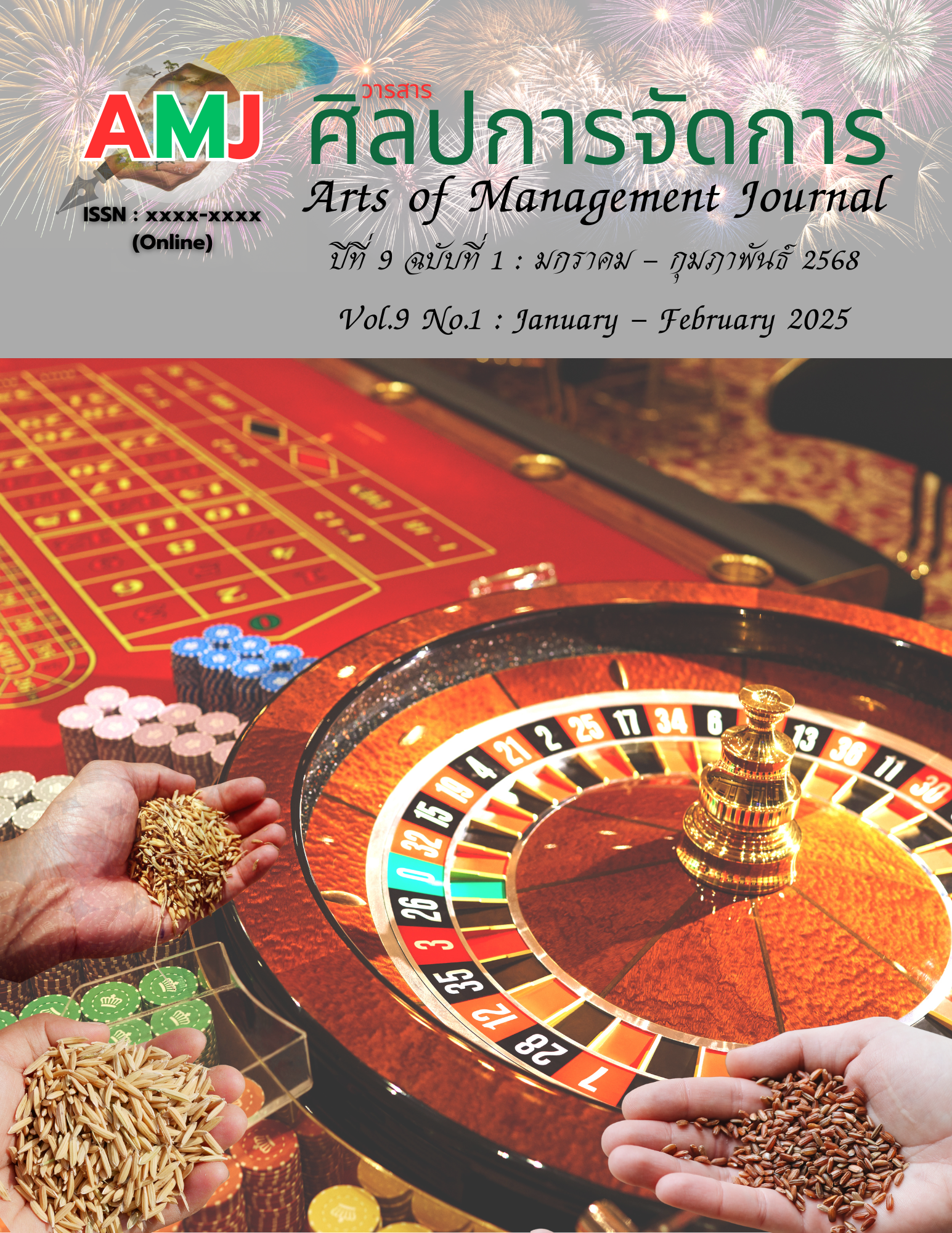The Evaluation of Educational Quality in Ethnic Minority Schools - A Case Study of Yunnan Minzu University
Main Article Content
Abstract
This study examines the factors influencing the quality of education at Yunnan Minzu University, a leading institution for ethnic minority education in China. The research aimed to (1) investigate the current teaching quality and (2) propose strategies to improve educational outcomes at the university. The study involved 389 students aged 19–28, sampled through simple random sampling. A structured questionnaire was employed to verify validity using the Content Validity Index (CVI) and Index of Objective Consistency (IOC). Statistical analyses included Pearson’s correlation coefficient and multiple regression analysis to explore relationships among diverse evaluation methods, systematic feedback, and educational quality.
Key findings revealed that diverse evaluation methods (β = 0.337, p < 0.01) and systematic feedback (β = 0.323, p < 0.01) significantly contribute to educational quality, aligning with Hypotheses 1 and 2. The study highlights infrastructural deficiencies and inequitable resource allocation as challenges, proposing strategies such as infrastructure upgrades, faculty development, and tailored curricula to address these issues.
New knowledge derived from this research emphasizes the interplay between evaluation methods, feedback systems, and inclusive teaching practices, which collectively enhance educational quality in ethnic minority contexts. The findings inform actionable strategies for fostering equitable and culturally relevant education, supporting the academic success and cultural preservation of ethnic minority students.
Article Details

This work is licensed under a Creative Commons Attribution-NonCommercial-NoDerivatives 4.0 International License.
Views and opinions appearing in articles in the Journal of Arts of Management It is the responsibility of the author of the article. and does not constitute the view and responsibility of the editorial team I agree that the article is copyright of the Arts and Management Journal.
References
Douglas, K. M., Sutton, R. M., & Cichocka, A. (2015). The psychology of conspiracy theories. Current Directions in Psychological Science, 24(6), 538-542.
Heilmann, S., & Melton, O. (2013). The reinvention of development planning in China, 1993–2012. Modern China, 39(6), 580–628.
Jiang, J., & Ke, G. (2021). China's move to mass higher education since 1998: Analysis of higher education expansion policies. Higher Education Quarterly, 75(3), 418–437.
Lai, L. (2002). Salt fish girl. Thomas Allen Publishers.
Li, M., Zareian, A., Lin, Y., Pan, X., Whitehead, S., Chen, B., Wu, B., Ji, H., Chang, S.-F., Voss, C., Napierski, D., & Freedman, M. (2020). GAIA: A fine-grained multimedia knowledge extraction system. In Proceedings of the 58th Annual Meeting of the Association for Computational Linguistics: System Demonstrations. Association for Computational Linguistics.
Lv, X., Lin, Y., Cao, Y., Hou, L., Li, J., Liu, Z., Li, P., & Zhou, J. (2022). Do Pre-trained Models Benefit Knowledge Graph Completion? A Reliable Evaluation and a Reasonable Approach. Findings of the ACL 2022, Association for Computational Linguistics.
Mulvey, B., & Wright, E. (2022). National and global positional competitions: Social class and ‘future selves’ in China. Journal of Research in International Education, 21(2), 87–104.
Nicholas, J., Fogarty, A. S., Boydell, K., & Christensen, H. (2017). The reviews are in: A qualitative content analysis of consumer perspectives on apps for bipolar disorder. Journal of Medical Internet Research, 19(4), e105.
Nojavan, S., Mahdavi, P., Bayatloo, M.R., & Chalavi, S. (2021). 6 - Application of magnetic nanomaterials in bioanalysis. Magnetic Nanomaterials in Analytical Chemistry, 121-154. https://doi.org/10.1016/B978-0-12-822131-0.00001-7
Saleh, R., & Atan, T. (2021). The involvement of sustainable talent management practices on employee’s job satisfaction: Mediating effect of organizational culture. Sustainability, 13(23), 13320.
Soria-García, J., & Martínez-Lorente, Á. R. (2020). The influence of culture on quality management practices and their effects on perceived service quality by secondary school students. Quality Assurance in Education, 28(1), 49-65.
Stoyanets, N., Tambovceva, T., Ivanov, I. H., Lyulyov, O., Pimonenko, T., & Yanishevska, K. (2020). Food security and green economy: Impact of institutional drivers. International Journal of Global Environmental Issues, 19(1/2/3), 158–176.
Verma, J. P., & Verma, P. (2020). Determining sample size and power in research studies: A manual for researchers. Springer.
Wang, H.-Y., Bakshi, K., Frankfurt, M., Stucky, A., Goberdhan, M., Shah, S. M., & Burns, L. H. (2021). Reducing amyloid-related Alzheimer's disease pathogenesis by a small molecule targeting filamin A. The Journal of neuroscience: the official journal of the Society for Neuroscience, 32(29), 9773–9784. https://doi.org/10.1523/JNEUROSCI.0354-12.2012
Yan, et al. (2022). An enhancer-based gene-therapy strategy for spatiotemporal control of cargoes during tissue repair. Cell Stem Cell, 30(1), 96–111.e6.
Zhang, Y., Marx, E., Williams, S., Gurung, R., Ogle, S., Horton, R., Bader, D., & Paustian, K. (2020). Adaptation in U.S. Corn Belt increases resistance to soil carbon loss with climate change. Scientific Reports, 10(1), 13799.
Zhu, N., Zhang, D., Wang, W., Li, X., Yang, B., Song, J., ... & Tan, W. (2020). A novel coronavirus from patients with pneumonia in China, 2019. The New England Journal of Medicine, 382(8), 727–733.

